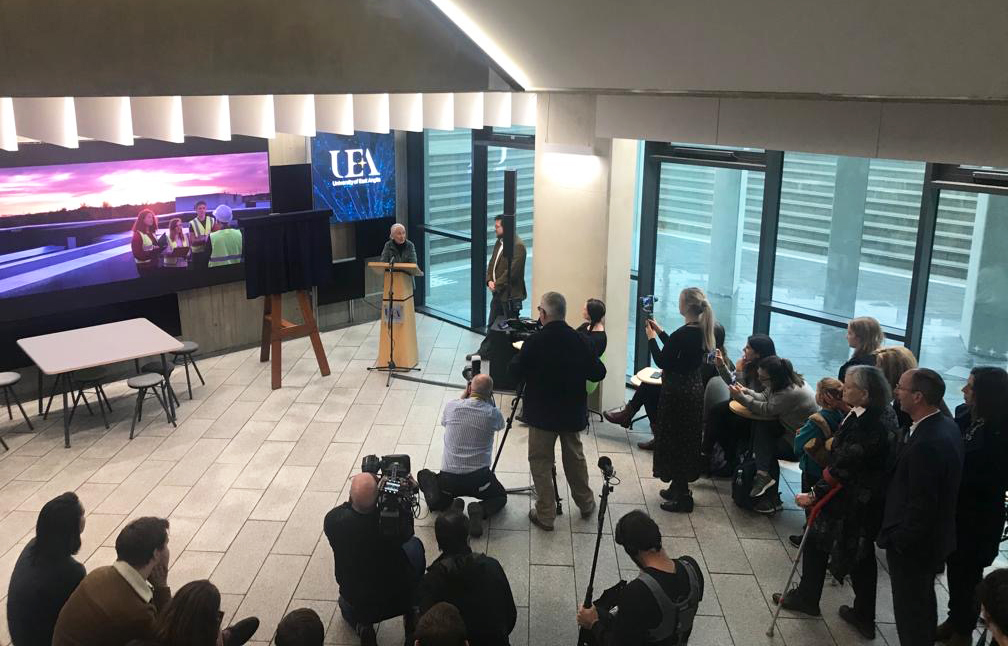

One of the world’s leading scientists, Dr Jane Goodall, has officially opened a state of the art new science building at the University of East Anglia, designed by Fraser Brown MacKenna Architects. The opening ceremony was attended by FBM’s Project Director John Moakes.
In developing our design proposals for the New Science Building, we sought to remain faithful to the ambitions of the original masterplan for the campus, designed by Denys Lasdun; that each building should contribute to the well-being of students, how they live, work and interact – and that the buildings should respect the geology and attractive landscape of the site. As the Vice-Chancellor, Professor David Richardson explained at the opening ceremony:
“This is a place where you can work alongside people from a wide range of academic disciplines. It’s a building for science but in the spirit in which UEA was founded, it is also a building for those who are not scientists. Students from across all the schools in this university will be receiving an education in this building, the social sciences, the arts, humanities it’s all the sciences coming together as one. The name was not chosen by accident. It’s a new building, clearly it’s a new building for science but it’s actually a new building in which we’ll be doing science in a new way, bringing together disciplines.”
The 7,000sqm building provides space for 1,600 staff and students with flexible teaching space on the ground floor arranged in nine rooms which can be joined together to form large exam halls. The upper floors will provide laboratories for a variety of subjects including an 890sqm chemistry & pharmacy “super-lab” for teaching 140 students simultaneously. The atrium has been designed to act as a pop-up library space for students to revise together or individually during the normal working day as well as at evenings and weekends during the exam season. Further seating and niches for informal interaction are carved out from the central spine corridor that provides access to the teaching rooms and laboratories. A raked seating area at first floor level of the atrium facilitates open-day presentations and informal lectures.
Speaking shortly before the official opening of the new building, Dr Jane Goodall remarked “the building has been carefully planned out as a green building and also for access for those with disabilities.”
The project aimed to radically reduce energy use in a building type that is renowned for high consumption and at 8.7kg/CO2/sqm, the predicted emissions from the new building are extremely low, giving it the highest EPC rating of ‘A’. The exposed concrete in the building provides accessible thermal mass to provide ‘peak-lopping’ of low winter and high summer temperatures. We worked closely with the main contractor R.G.Carter and specialist suppliers to improve the energy efficiency of the 55 fume cupboards in the building, developing more efficient cupboards that have smaller sashes that are sub-divided to further minimise opening apertures. 17,400kWh of electricity will be generated from the 130sqm PV array.
Accessibility was also a key driver from the outset, with the latest technology built-in to each lab providing state-of-the-art teaching and research environments, adjustable height fume cupboards, hearing loops in every teaching space and motor assisted doors throughout; over 8% of students at UEA have a declared disability.
Dr Jane Goodall DBE is also a United Nations Messenger of Peace and established the Jane Goodall Institute in 1977, which has advanced her research and built on her innovative approach to conservation. Find out more about the opening of the building over on the UEA website.